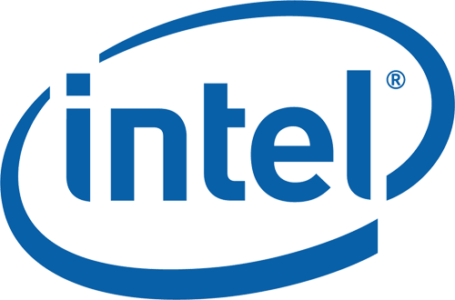Should you rather choose an Intel processor or an AMD CPU in your laptop at an equivalent price and chassis? This is THE question that has been constantly coming up for years…
Far from the a priori specific to the aficionados of each brand, we wanted to objectively try to answer this question. To do this, we selected a notebook model available in AMD and Intel versions (and it was no small feat), namely the Acer Swift 3 . Affordable, this office laptop has the particularity of starting from the same chassis to offer these two versions, minimizing all the variables that can interfere with our measurements and therefore our analysis. The identical recommended retail price (900 euros) between the AMD and Intel models naturally makes it possible to compare the two platforms fairly .

Almost identical platforms for AMD and Intel
Concretely, the Swift 3 in the “Intel” version has a Core i5-1135G7 , a quad-core model with Hyper-threading, clocked at a base frequency of 2.4 GHz with a maximum boost of 4.2 GHz. Engraved in 10nm, this Tiger Lake processor also includes 8 MB of L3 cache and an Iris Xe iGP at 1.3 GHz, all for a TDP of 28 watts. For its part, the Swift 3 “AMD” version uses a Ryzen 5 5500U (“Lucienne”) engraved in 7nm, a hexacore processor with SMT (i.e. 12 simultaneous threads) clocked at 2.1 GHz but with a Boost frequency that can go up up to 4.0GHz. It also has 8 MB of L3 cache, and also embeds a Radeon Graphics graphics part running at 1800 MHz, for a TDP of 15W.


The rest of the configurations are almost identical: we thus find in each case 16 GB of LPDDR4-4266 RAM , but with slightly different settings. The “Intel” model thus benefits from four DRAM channels and tCAS-tRCD-tRP-tRAS timings of 36-39-39-90, while the “AMD” version has to make do with two memory channels with timings of 40- 39-45-90. There is also a 512 GB SSD in NVMe, the essential WiFi, Bluetooth and audio controllers as well as a battery with the same capacity (53 Wh, 13V) and an equivalent chassis. The set works under Windows 11 Home.
Test protocol
In order to obtain the most complete view possible of the performance of each platform, the two machines were tested in an identical environment, in particular at the level of the ambient temperature (19°C) . The drivers installed were in all cases the latest publicly available. Performance measurements of the processor and its graphics were carried out with a selection of applications and synthetic benchmarks ranging from 3DMark to Cinebench via Maya, Catia, 7Zip or even LuxRender, all with notebooks connected to the mains in order to not to suffer from any limitation of consumption.
| Office automation | – PCMark 10 |
| Multimedia and 3D | – Cinebench R20 ST – Cinebench R20 MT – Blender – Handbrake – LuxRender |
| HIGH | – CalculiX – WPCcfd – Rodinia (CFD) |
| Scientific applications | – LAMMPS – NAMD – Rodinia (heartwall, lavamd, hotspot, srad) – Convolution – FFTW – Kirchhoff Migration – Poisson (OpenMP) – SRMP |
| Development | – 7zip – Octave – Python 3.6 |
| Video game | – 3DMark FireStrike – 3DMark FireStrike Extreme – 3DMark FireStrike Ultra – 3DMark Timespy – 3DMark Timespy Extreme |
| Multimedia and 3D | – Maya – 3ds Max |
| HIGH | – CATIA – Creo – NX – Solidworks – Showcase |
The measurements obtained were then reported at an index of 100 and grouped according to the type of software (Multimedia and 3D, Development, Scientific Applications, etc.) in order to simplify the comparison between the two platforms. Finally, an overall index makes it possible to summarize all the measurements carried out .
Performances CPU
The differences between the two platforms vary greatly depending on the bench or the software used, but the overall index summarizing all the CPU performance measurements indicates a difference of around 24% between the platform based on a Core i5 and that boarding a Ryzen.
This is quite understandable given that the majority of test software takes advantage of the higher core count on AMD’s processor . On the other hand, when the software or test suite uses few cores simultaneously, Intel’s Core i5-1135G7 recovers thanks to its higher IPC and Boost frequency, even if this is not enough to reach totally the performance of the Ryzen 5 5500U .

Among the interesting points of detail, we note that the PCMark 10 scores of the Intel and AMD platforms are very close (respectively 4744 and 4869 points): with a difference of only 2.5%, the difference in performance will be almost imperceptible in such a pure office use .
The AMD CPU model is almost always faster than the Intel CPU model, the only exceptions being the Cinebench R20 single-thread test (thanks to the IPC count and higher Boost frequency on the Intel side) and the FFTW test. The Core i5-1135G7 is faster than the Ryzen 5 5500U by 12% and 13% respectively in these two tests. On the other hand, some software strongly favors the AMD platform: we thus reach 78% (!) with Octave or 44% with NAMD.
Performances 3D

Benchmarks and software using the graphics part of these two processors highlight an average difference of 15% in terms of performance, once again to the advantage of Ryzen , with however large disparities depending on the application. Solidworks will for example be 42% faster on the AMD platform, Creo twice as efficient. The only exceptions are Showcase, which is about 10% faster on the Intel platform, and especially the video game part. The Core i5-1135G7 and its integrated Iris Xe dominate in all the 3DMark tests carried out, with an average lead of around 23%. In absolute terms, the graphics performance of these two chips will prove insufficient to pleasantly enjoy the latest AAA titles, but this is not the target market anyway.
Autonomy
The identical chassis and battery between these two versions of the Acer Swift 3 make it possible to measure their autonomy in a perfectly fair way. The difference in consumption will allow you to check which platform consumes the most. To perform this test, we used the PCMark 10 Battery benchmark, with panel brightness set to 200 cd/m² and energy management configured to “normal” in Windows.
The difference in autonomy between the two platforms is significant since we go from 8:25 with the Intel platform, an already honorable measurement, to almost 11 hours with the Ryzen! It’s almost 30% more , which is far from negligible. We can assume that this difference comes from a lower consumption of Ryzen compared to Core i5, partly thanks to its better engraving finesse. But the score of this test shows another important element: the performance of the Intel platform seems better on battery power than that of the model equipped with an AMD CPU .
Temperatures, consumption and noise pollution
To stress the platforms and see how the processor behaves, we used The Witcher 3 game for a 30-minute session, in Full HD with the options pushed to the maximum.
Intel and AMD processors behave visibly differently under load. The Core i5 sees its frequency and temperature fluctuate regularly, while AMD’s Ryzen gradually increases in temperature with a lower and much more stable frequency. We note in passing that the Intel CPU climbs higher in temperature: it reaches a maximum of 71°C, compared to only 63°C for the Ryzen 5 5500U. Both processors still remain far from their operating temperature limits.
The behavior of Ryzen is also quite interesting after 20 minutes: it sees its frequency drop significantly, dropping from around 2.4 GHz to 1.6 GHz. However, the temperature remains reasonable and far from what the Ryzen can withstand, and the EDC and TDC limits are not reached. Hard to say what is causing this behavior, except that it must be a limit (of consumption or temperature) that is reached somewhere, perhaps on the side of the power stage of the platform.
The consumption of the Intel platform varies over time in the same way as the frequency of the processor or its temperature. The oscillation comes from the PL4 consumption limit (ie of the platform as a whole) which is reached, forcing the processor to regularly lower its consumption and therefore its frequency. On the AMD side, the curve is more stable, with the stall around 20 minutes found here too.
In terms of noise pollution, the model equipped with a Core i5-1135G7 is surprisingly slightly less noisy, while its TDP is higher and we would rather expect a more pronounced effort from the cooling system. The difference between the two models is in practice quite minimal, and in both cases the noise pollution remains very acceptable.
So, rather Intel or AMD?
It is difficult to give a definitive and unequivocal answer to this question. If we rely on our measurements, we still notice that at the same price, an AMD platform will be generally faster than an Intel platform in the same chassis, with some exceptions. For example under 3DMark, it is the Intel platform with its Iris Xe iGP which takes over the Radeon Graphics of the Ryzen 5 5500U.
In practice, if you are content with classic office tasks (simulated by the PCMark 10 benchmark), the performance differences between the AMD and Intel platforms are almost non-existent . The differences really appear with professional applications (CAD, development, 3D modeling, etc.) where the Ryzen 5 5500U then takes over.

Note that the AMD platform is the winner of the autonomy test, but with one downside: it offers lower battery performance than that allowed by the Intel platform . In other words, you will have to turn to AMD if you want the best autonomy at all costs, but the choice will be more difficult if mobility performance is also important to you.
Finally, one last detail should be taken into account: the comparison of the two platforms is only relevant if their price is equivalent and remains valid as long as the processor manufacturers keep their current price list.




Be First to Comment